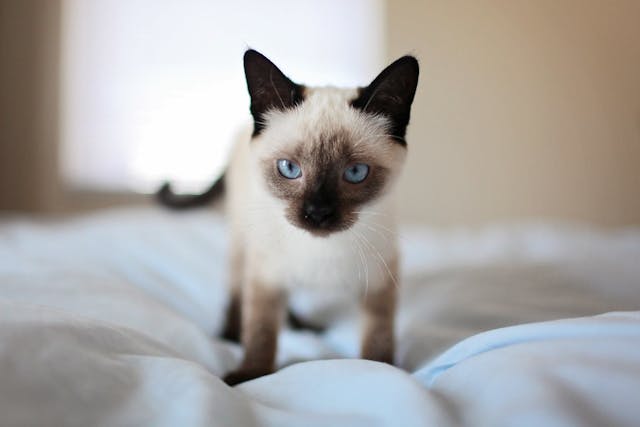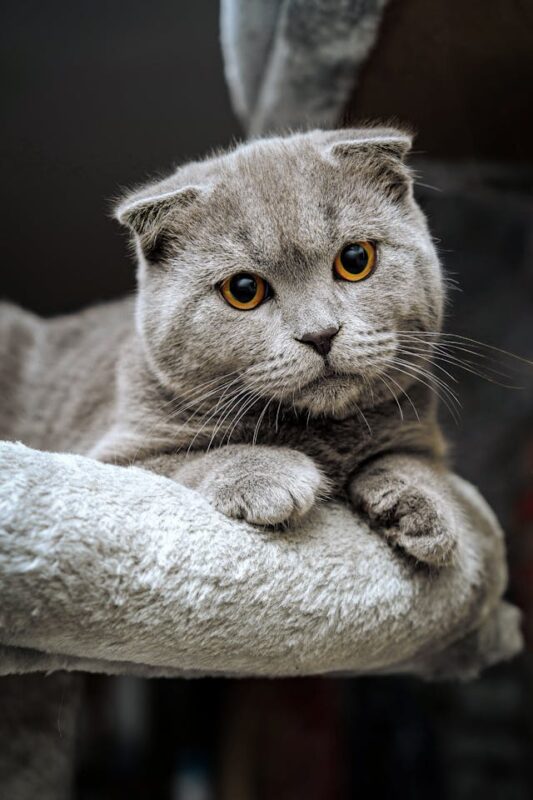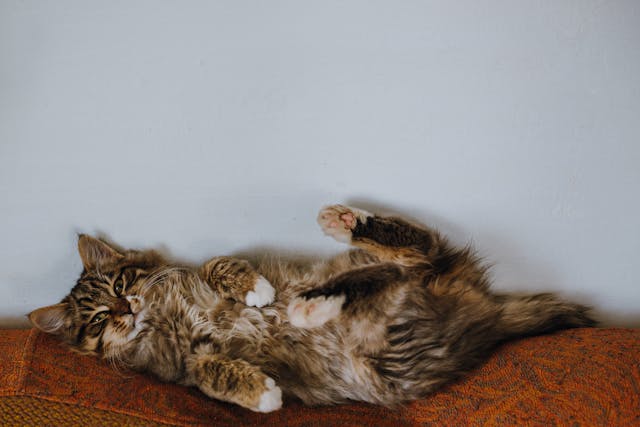Watery Eyes in Cats: Causes and Treatments
Posted: 06/23/2025 | BY: Jenna Bruce | Categories: Cat , Health problems , Pet care
While it might seem adorable, or even a little emotional, watery eyes in cats are often a sign that something’s going on. Tearing, also known as epiphora, is surprisingly common in cats. Sometimes it’s totally harmless. But other times, it’s a sign of an underlying health issue that needs attention.
Let’s break down why your cat’s eyes might be watering, how to prevent it, when to call the vet, and varying treatments available.

First Things First: What Counts as “Watery Eyes”?
It’s normal for cats to have a tiny bit of eye moisture. Just like us, they need it to keep their eyes lubricated and clear. But if you notice constant tearing, tear stains on the fur, or goopy discharge, that’s when you’ll want to pay closer attention.
Excessive tearing can be clear, cloudy, yellow, or even green. The color and consistency can help your vet figure out what’s going on.
And if your cat is squinting, rubbing their face, or seems more withdrawn than usual, that could be their way of saying, “Hey, something’s not right here.”
Common Causes of Watery Eyes in Cats
There are quite a few reasons your cat might be dealing with watery eyes. Some are simple and short-term, while others need a bit more medical attention.
Here are some of the most common causes of watery eyes in cats:
1. Allergies
Yes, cats can have allergies too! Pollen, dust, mold, perfumes, and even cleaning products can trigger watery eyes in your cat. You might also notice sneezing or itching along with the eyes watering.
2. Eye Infections
Viruses and bacteria are a common cause of watery, goopy eyes in cats, especially in kittens. The most common culprit is feline herpesvirus, which often stays dormant in the body and can flare up during times of stress.
Other infections, like chlamydia or mycoplasma, can also lead to red, swollen eyes with discharge.
3. Conjunctivitis (Pink Eye)
This is an inflammation of the lining of the eye and can make your cat’s eyes appear red, swollen, and teary. It’s often linked to infections, but can also come from irritation or allergies.
4. Foreign Bodies
A speck of dust, a stray hair, or even a blade of grass can irritate the eye and cause tearing. Usually, if it’s something minor, your cat’s eye will clear up on its own—but if it persists, it’s time for a vet visit.

5. Injuries or Scratches
Rough play or accidents can lead to scratches on the eye, called corneal ulcers, which can be painful and cause excessive tearing. These require prompt vet care to prevent infection or vision problems.
6. Upper Respiratory Infections
Cats with “colds” often have watery eyes, along with sneezing, nasal discharge, and lethargy. These are especially common in shelters or multi-cat homes.
How to Prevent Watery Eyes in Cats
While you can’t prevent everything, there are a few things you can do to help minimize the risk of your cat developing watery eyes:
1. Keep Their Environment Clean
Dust and allergens can easily irritate your cat’s eyes. Regularly vacuuming, avoiding strong chemical cleaners or scented candles, and using air purifiers can make a big difference, especially if your cat has allergies.
2. Stay on Top of Vaccinations
Many eye infections are caused by viruses like feline herpesvirus and calicivirus, which are included in your cat’s core vaccines. Keeping up with regular vaccinations helps prevent flare-ups and infections.
3. Groom Regularly
Long-haired cats are more prone to eye irritation from fur or debris. Brushing around their face and wiping their eyes gently with a soft, damp cloth can keep things under control.
4. Feed a High-Quality Diet
A balanced diet supports your cat’s immune system, which plays a major role in fighting off infections and inflammation.

5. Reduce Stress
Stress can trigger flare-ups of viral infections. Make sure your cat has a safe, quiet place to retreat, and avoid sudden changes to their routine or environment when possible.
How to Treat Watery Eyes in Cats
Treatment really depends on the cause. That’s why a trip to the vet is important if your cat has persistent tearing, especially if it’s accompanied by other symptoms.
Here are some of the most common treatments:
- Eye drops or ointments: These are used to treat infections or soothe inflammation.
- Oral antibiotics or antivirals: If the issue is due to a bacterial or viral infection, your vet might prescribe medications to help your cat recover.
- Flushing blocked tear ducts: In some cases, your vet can flush your cat’s tear ducts to help them drain properly.
- Surgery: In rare cases, surgery might be needed to correct structural issues or remove foreign objects.
And don’t worry, most cats respond well to treatment and are back to their bright-eyed selves in no time.
When to See the Vet
It’s time to see the vet if your cat’s eye watering is:
- Lasting more than a few days
- Accompanied by redness, swelling, or squinting
- Producing yellow, green, or thick discharge
- Causing your cat to paw at their face or act uncomfortable
Early treatment can prevent complications and keep your fur baby comfortable.

The Bottom Line: Keep an Eye on Your Cat’s Eyes
Watery eyes might not seem like a big deal at first, but they’re your cat’s way of signaling that something’s not quite right. Whether it’s allergies, a virus, or just a bit of fluff stuck in their lashes, it’s always worth paying attention.
With a little observation, some preventative care, and the support of a good vet, you can help your cat stay healthy, happy, and bright-eyed for years to come.
Why Pet Insurance Matters
Eye issues in cats can range from minor to serious, and sometimes what seems like a small problem can turn into a larger – and more expensive – one. From diagnostic tests and medications to emergency visits or even surgery, the costs can add up quickly.
That’s why pet insurance is a smart move for cat parents.
With pet insurance, you’re covered for:
- Unexpected vet visits
- Eye exams and diagnostic testing
- Prescription medications
- Ongoing treatment for chronic conditions
- Emergency procedures
It’s peace of mind in your back pocket, so when your cat needs care, you can focus on helping them feel better instead of worrying about the bill.
Thinking about pet insurance? Now’s the perfect time to explore your options and give your feline friend the protection they deserve.
Find & Compare the Top Pet Insurance Companies
Get Quotes for Your Cat
References:
- https://www.webmd.com/pets/cats/causes-of-feline-watery-eyes
- https://www.allaboutvision.com/eye-care/pets-animals/cats-eyes-watering/
- https://www.petmd.com/cat/conditions/eyes/watery-eyes-epiphora-cats
Disclaimer
The information contained on this blog is intended for informational and educational purposes only and should not be construed as medical advice. It is not a substitute for professional veterinary care. Always consult with your veterinarian before making any changes to your pet's health care or treatment plan.
The authors of this blog are not veterinarians and do not claim to be experts in pet health. The information provided here is based on our own experiences and research, as well as information from reputable sources. However, we cannot guarantee the accuracy or completeness of this information.
We encourage you to do your own research and consult with your veterinarian before making any decisions about your pet's health.
Previous post
Top 10 Water-Loving Dog BreedsCompare top pet insurance providers plans.
Enter your dog’s age in years and months to calculate their age equivalent to human years.
Calculate your dog’s ageEnter your cat’s age in years and months to calculate their age equivalent to human years.
Calculate your cat’s age